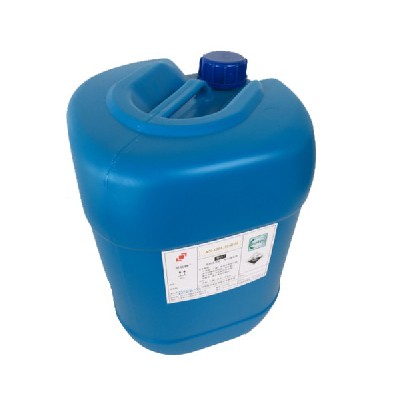Circuit board chemical manufacturer: precautions for the use of hydrochloric acid
Risk overview
Health damage: touching its vapor or smoke can cause acute poisoning, eye conjunctival disease, burning sensation of nasal and oral mucosa, epistaxis, gingival bleeding, tracheopathy, etc. Ingestion by mistake can cause gastrointestinal burns and ulcer formation, and may cause gastric perforation, peritoneal disease, etc. Eye and skin touch can cause burns.
Slow effect: long term touch can cause slow nose disease, tooth etching and skin damage.
Environmental damage: damage to the environment and pollution to water and soil.
Risk of ignition and explosion: This product is non combustible, highly corrosive and irritating, and can cause burns to human body.
Toxicological materials and environmental behavior
Acute toxicity: ld50900mg / kg (rabbit oral); Lc503124ppm, 1H (rat inhalation)
Risk characteristics: it can react with some active metal powders and release hydrogen. In case of cyanide, highly toxic hydrogen cyanide gas can occur. It reacts with alkali and emits a lot of heat. Highly corrosive.
Incineration (decomposition) product: hydrogen chloride.
Precautions for operation
Closed operation, pay attention to ventilation. The operation shall be mechanized and automatic as far as possible. Operators shall be specially trained and strictly abide by the operating procedures. It is recommended that operators wear self-priming filter gas masks (full face masks), rubber acid and alkali resistant clothes and rubber acid and alkali resistant gloves. Keep away from inflammables and combustibles. Avoid steam leakage into the air of the workplace. Avoid touching with alkali, amine and alkali metals. Handle with care to avoid damage to packaging and containers. Provide leakage emergency treatment equipment. Empty containers may leave harmful substances.
Acid mist treatment
During the use of hydrochloric acid, a lot of hydrogen chloride gas occurs. The air suction device can be installed next to the container, and then cooperate with fans, acid mist purifiers, air ducts and other equipment and facilities to discharge the hydrochloric acid mist outdoors for treatment. Acid mist inhibitor can also be added to hydrochloric acid to inhibit the volatilization of hydrochloric acid mist.

Leakage emergency treatment
Emergency treatment: quickly evacuate the personnel in the leakage contaminated area to the safe area, isolate them and strictly restrict their access. It is recommended that emergency treatment personnel wear self-contained positive pressure respirator and acid-base protective clothing. Don't touch the leak directly. Try to stop the leakage source as much as possible.
Small leakage: mix with sand, dry lime or soda ash. It can also be washed with a lot of water, diluted with washing water and put into the wastewater system.
Many leaks: build embankments or dig pits for shelter. Pump it to the tank car or special collector, recover it or transport it to the waste treatment site for disposal.
Fire fighting measures
Risk characteristics: it can react with some active metal powders and release hydrogen. In case of cyanide, highly toxic hydrogen cyanide gas can occur. Neutralize and react with alkali and release a lot of heat. It has strong corrosivity.
Hazardous incineration product: hydrogen chloride.
Fire extinguishing method: neutralize with alkaline substances such as sodium bicarbonate, sodium carbonate and hydrated lime. It can also be remedied with a lot of water.
First-aid measures
Skin touch: take off contaminated clothes immediately, wash with a lot of active water for at least 15 minutes, and apply weakly alkaline substances, such as soapy water. See a doctor.
Eye touch: lift the eyelids immediately and wash them with a lot of active water or normal saline for at least 15 minutes. See a doctor.
Inhalation: quickly leave the site to a place with fresh air. Keep the respiratory tract unobstructed. If breathing is difficult, give oxygen. If breathing stops, perform artificial respiration immediately. See a doctor.
Ingestion: rinse with water and seek medical advice.
Article from: circuit board chemical factory www.sun-chem.cn
-
03-28
Circuit board chemical factory: detection of oxygen and nitrogen content in metal silicon powder
Metallic silicon powder, also known as crystalline silicon powder or industrial silicon powder, is mainly used as an additive for non-ferrous alloys. Silicon is the right and wrong metal element, which appears gray, has metal color, and is hard and brittle.Metal silicon powder is an importan
-
03-28
Semiconductor chemical manufacturer: what coupling agent is used to treat the surface hydroxyl of silica
White carbon black is a general term for white powder X- ray amorphous silica and silicate products. The first is silica gel, fumed silica and fine silica gel, and also consists of powdered aluminum silicate and calcium silicate. Silica is a porous material, and its composition can be shown by S
-
03-28
Guangdong chemical raw material wholesale: what is electrolytic manganese sheet
The production of electrolytic manganese sheet is in the form of tenon and mortise for the touch of aluminum strip and copper strip, the touch end of aluminum strip is tenon, and the corresponding receiving end of copper strip is mortise; It is also possible that the touch end of the copper head
-
03-28
Wholesale of chemical raw materials in Guangdong: what crystal does boron nitride belong to
What crystal does boron nitride belong to? Boron nitride belongs to atomic crystal, which is composed of nitrogen and boron atoms, also known as covalent crystal.The common type of boron nitride crystal is cubic boron nitride crystal. Because cubic boron nitride crystal has high hardness and